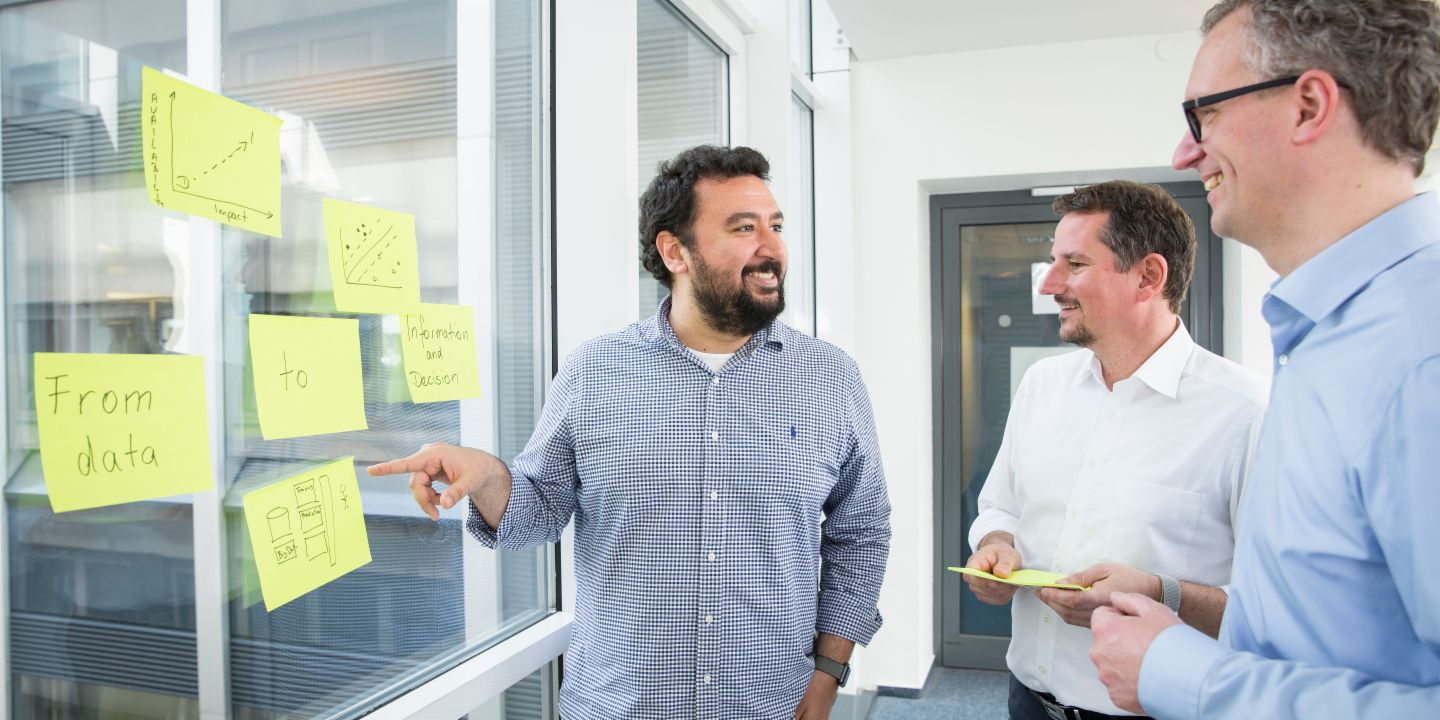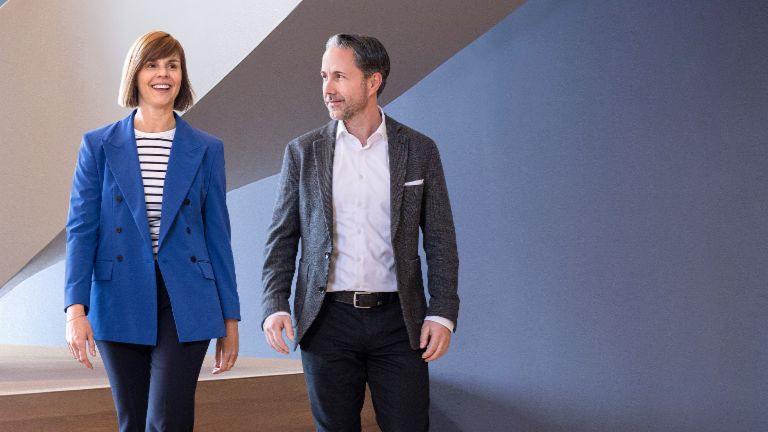At EOS, Big Data won’t work without humans guiding it.
When the machines move in, people become obsolete: Not true, says the team leading EOS’ Center of Analytics: They have built an analytics platform that is set to transform the business in EOS’ markets – and create a data-driven mindset across the whole organisation.
Soon after Joachim Göller joined the EOS Group in December 2017, he sat down to look at how to shape the Center of Analytics. His task: to help EOS and its activities in 25 countries turning into a data-driven company. ‘In order to take that great leap forward, I soon realised that we must first take a step backward,’ Göller says, sitting in a conference room at an EOS office in Hamburg’s City centre.
With the headquarter in Germany, EOS has a strong presence and track record in managing receivables in Europe. Countries as different as Poland, Spain and Bosnia are on the list of locations on the continent. But EOS is also operating in Russia and across the Atlantic in Canada and the US. This shows the size of the task that Göller and his team at the Center of Analytics (CoA) are tackling: It's not just about creating a business intelligence platform. It's about embedding a data-driven mindset in the work culture of more than 55 subsidiaries that serve around 20,000 clients worldwide, while spreading data-driven decision making and embracing the technology behind it.
Developing a system that will work with multiple collection services.
“We're are one strong driving force behind digitisation at EOS and that also means bringing data into shape and transforming data into information,” the manager says. “Initially, it's all about accessing data sources, checking the quality and creating a history.” With the development of the platform the Center of Analytics can integrate local debt collection systems already in place at EOS subsidiaries across the globe and move analytical decision making to the platform: EOS units can keep their core collection system that fits the requirements of their market – the CoA will connect it to its infrastructure, turbocharging it with the data science and data visualisation power of the whole enterprise, while ensuring the privacy of every customer by only using anonymised data.
To get a better idea on how the Center of Analytics works, it helps to look at the people behind it. The unit's staff includes many different profiles: “On the one hand, we're always looking for new talent with a technical focus,” Team Manager Patrick Witte says. Data scientists, software developers, data engineers and platform architects may fit the bill. They design and operate the Analytics Platform, which remains at the heart of the CoA's efforts to transform EOS and help it stay a business leader. “Our goal is to find the most efficient way to shift data from the various EOS countries into the Analytics Platform, following the EU data protection rules,” Witte says. “That allows us to design forecast models, make use of artificial intelligence and create channels to send back findings to the operational side - providing them with a competitive advantage.”
Think global, act local.
The Center of Analytics also includes an advisory arm that's promoting the sharing of best practices around analytics, including data security and privacy protection, at all subsidiaries. “We can support colleagues to analyse data in one part of the world, while helping to improve existing statistical models in another part,” Witte says. “For that we are working hand-in-hand with our colleagues all over the EOS Group.” That’s where the second group of professionals at the CoA comes in: Analytical consultants and data scientists, most of them with methodical backgrounds ranging from mathematics to economics. “It needs a broad skill set to make sure that the business needs are identified and solved with the right analytical approach,“ says Witte.
Witte himself earned a statistics degree at the University of Dortmund, later working for an international business analytics company before joining EOS in 2012. ‘The necessary skills I acquired here at EOS,’ he says. But there's no prescribed way - at the CoA team you will meet people you might not expect in the financial sector: ‘We also have a theoretical physicist who worked as a consultant for several years before she joined us.’
Applying the agile methodology to financial services.
Witte and his colleague Joachim Göller both sense a great deal of momentum within the CoA team. “It's really the start-up atmosphere that brought me here in the first place,” says Göller, who previously worked in the banking sector for several years. “The CoA is a very agile, very culturally diverse team with its own pace.”
As if EOS had set up its own Fintech, the CoA's business model also resembles that proven by many start-ups: First getting an analytics platform off the ground, later scaling operations and letting partners connect their own systems by offering an API. And, of course, constantly testing, learning and improving the system by following the rules of agile software development. With one major difference to start-up life: The CoA team can work on fintech innovation without having to please investors. At EOS, it's all about long-term commitment to the customers.
Applying a data-driven approach to the collection process.
While the change process is already well underway in Germany with first use cases managed by a new software called FX, the CoA now looks to support other units in adapting a similar data-driven mindset. Göller trusts that success stories will pave the way and create the right incentives for decision-makers: “It's like modern-day marketing: You need to win fans that drive this process forward,” he says. “Every case we tackle must result in a direct benefit for the client.” People first: The agile way of working is very much in use at the CoA.
Concerns that big data technology could replace people and jobs are unfounded, Witte says, “We depend on our experts to interpret the available consumer data and ask the right questions for the data analysis system to answer.” One way for EOS staff to look at machine learning und artificial intelligence may be to liken it to a smart ‘co-worker’ who helps them to make better informed and more personalised decisions on the next best action - and increase the rate of collected receivables.
Big Data solutions need employees to run them.
While the transformation to a data-driven business is seen to increase efficiency and boost the chances of debt being repaid, clients will also benefit considerably, according to Göller. Among other advantages the system will find the most suitable time to send customers alerts. “To rely on algorithms come hell or high water would, however, be against our ethical standards,” Göller says. For instance EOS would never allow an algorithm to rate borrowers' credit history by the sound of their names. “That's where we strongly rely on humans to set barriers.”
Explore more from EOS



-.jpg/jcr:content/___16_7_CEO%20Otto%20Group%20and%20CEO%20EOS%20Group%20in%20Sarajevo%20with%20EOS%20MATRIX%20BA%20(2)%20.13593179161371862035.jpg)